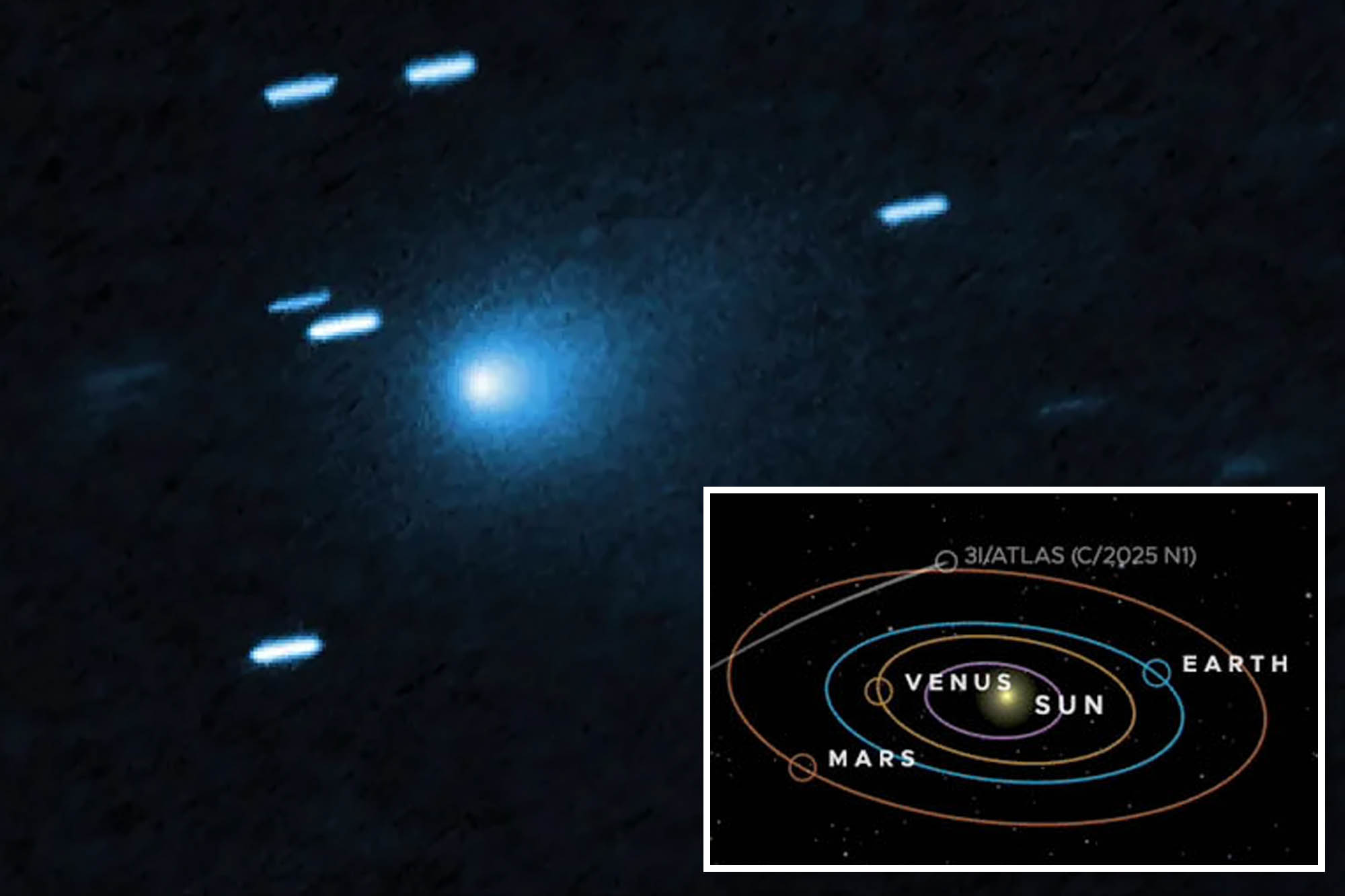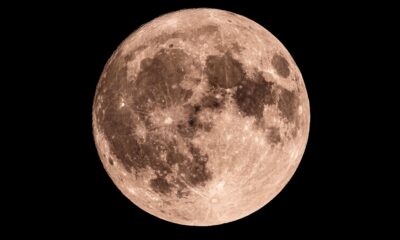Science
Interstellar Object 3I/ATLAS Shows Unusual Acceleration and Color Change

The interstellar object known as 3I/ATLAS has displayed unusual characteristics, including non-gravitational acceleration and a color shift that makes it appear “bluer than the Sun.” This phenomenon, observed during its recent passage near our solar system, has prompted speculation about the possibility of an artificial origin, according to Harvard astrophysicist Avi Loeb.
NASA reported this week that 3I/ATLAS demonstrated signs of dramatic outgassing, a behavior typically associated with comets. Such outgassing could lead to a reduction in the object’s mass by as much as half and result in a significant plume of debris. Loeb proposed in a recent paper that the observed acceleration and the object’s striking blue hue could indicate the presence of an artificial propulsion system. He suggested that this might also explain its unexpected brightness, stating, “This might also explain the report on 3I/ATLAS getting ‘bluer than the Sun.’”
While the Earth-based telescopes were unable to directly observe the interstellar visitor, which approached within 172 million miles of the Sun, several spacecraft orbiting the Sun were able to capture critical data. Measurements taken revealed a “rapid brightening” of the object, which appeared “distinctly bluer than the Sun,” according to findings from the US Naval Research Lab. Loeb noted that this new hue is “very surprising” and contrasts with earlier observations that indicated the object had changed colors from red to green.
Upcoming Close Pass and NASA’s Response
3I/ATLAS is expected to make its closest approach to Earth on December 19, 2023, when it will be approximately 167 million miles away. This will provide scientists on the ground with an opportunity to gather more data and determine whether the object is indeed a comet or an engineered craft. Loeb stated that if no substantial cloud of gas is observed around 3I/ATLAS during the December flyby, it could suggest the presence of a propulsion system.
In light of the recent discussions surrounding 3I/ATLAS, NASA has faced criticism for not releasing photographs taken by the Mars Reconnaissance Orbiter during its flyby of the Red Planet in early October. Sources indicate that the anticipated images will not be disclosed until the government reopens.
NASA’s Acting Administrator Sean Duffy addressed concerns regarding the object, emphasizing that 3I/ATLAS is the third interstellar comet to traverse our solar system. In a response on X to inquiries from the public, including reality TV personality Kim Kardashian, Duffy reassured that there is “no threat to life here on Earth” and dismissed the notion of extraterrestrial involvement.
As researchers prepare for the upcoming close encounter in December, the scientific community remains attentive to the implications of 3I/ATLAS’s behavior. Whether this object is a natural celestial phenomenon or something more enigmatic continues to spark debate among scientists and space enthusiasts alike.
-

 World2 weeks ago
World2 weeks agoGlobal Air Forces Ranked by Annual Defense Budgets in 2025
-

 World2 weeks ago
World2 weeks agoMass Production of F-35 Fighter Jet Drives Down Costs
-

 Top Stories2 weeks ago
Top Stories2 weeks agoDirecTV to Launch AI-Driven Ads with User Likenesses in 2026
-

 Science2 weeks ago
Science2 weeks agoTime Crystals Revolutionize Quantum Computing Potential
-

 Top Stories2 weeks ago
Top Stories2 weeks agoNew ‘Star Trek: Voyager’ Game Demo Released, Players Test Limits
-

 World2 weeks ago
World2 weeks agoElectrification Challenges Demand Advanced Multiphysics Modeling
-

 Entertainment2 weeks ago
Entertainment2 weeks agoFreeport Art Gallery Transforms Waste into Creative Masterpieces
-

 Lifestyle2 weeks ago
Lifestyle2 weeks agoDiscover Reese Witherspoon’s Chic Dining Room Style for Under $25
-

 Health2 weeks ago
Health2 weeks agoGavin Newsom Critiques Trump’s Health and National Guard Plans
-

 Lifestyle2 weeks ago
Lifestyle2 weeks agoLia Thomas Honored with ‘Voice of Inspiration’ Award at Dodgers Event
-

 Entertainment2 weeks ago
Entertainment2 weeks agoFast & Furious Coaster Hits the Track at Universal Studios
-

 Science2 weeks ago
Science2 weeks agoWaning Crescent Moon: What to Expect on October 17









